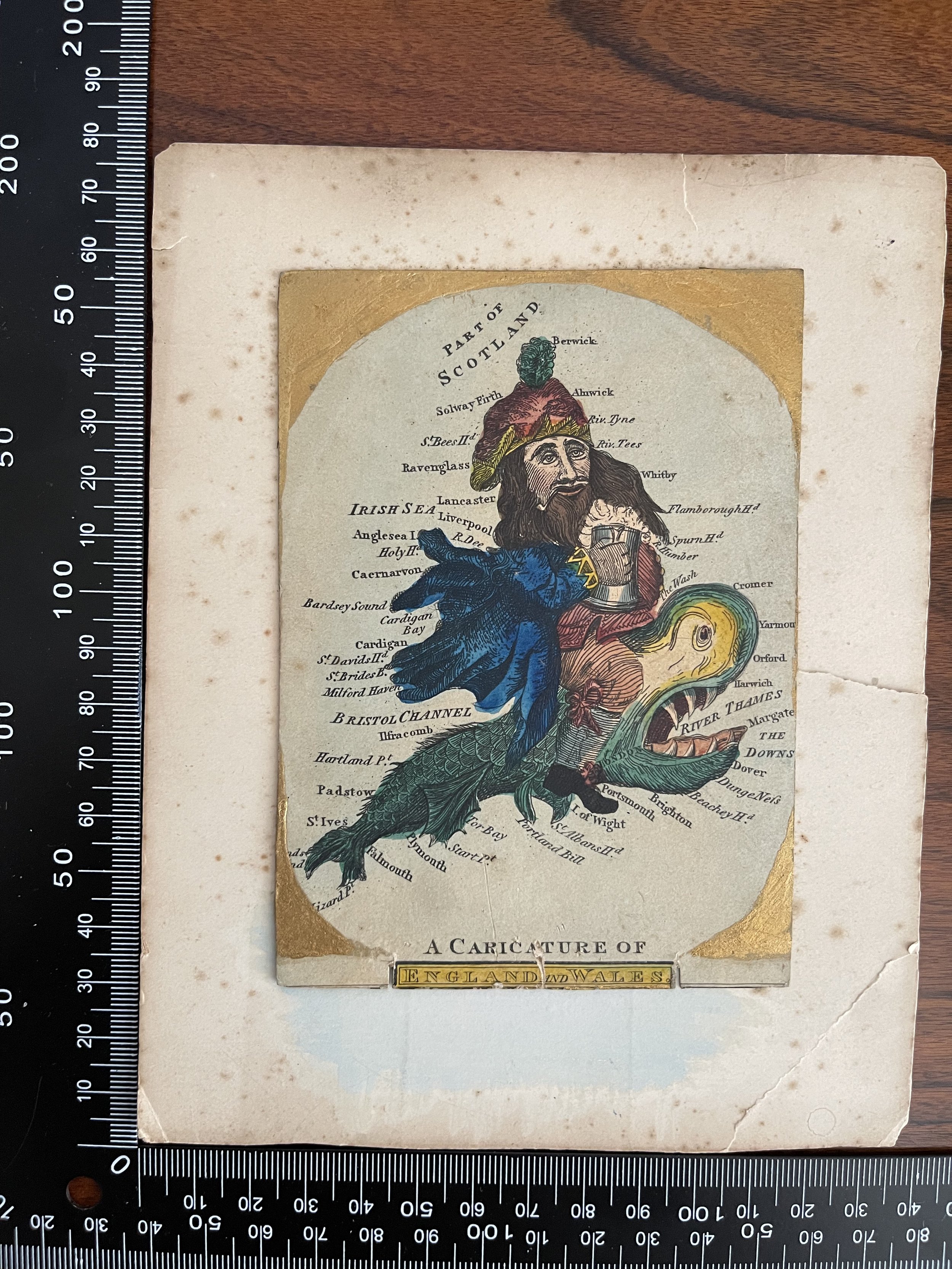 Image 1 of 7
Image 1 of 7

 Image 2 of 7
Image 2 of 7

 Image 3 of 7
Image 3 of 7

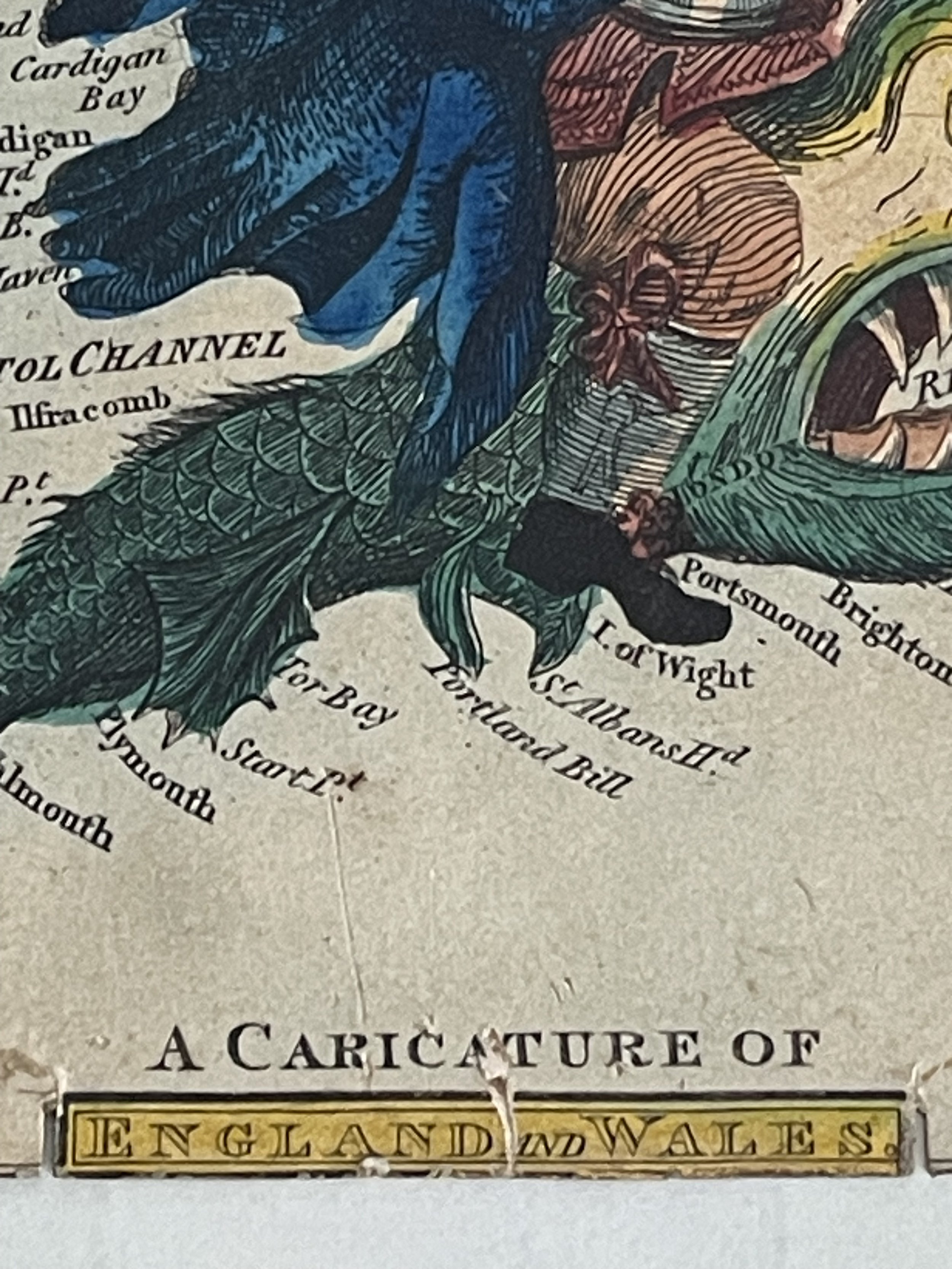 Image 4 of 7
Image 4 of 7

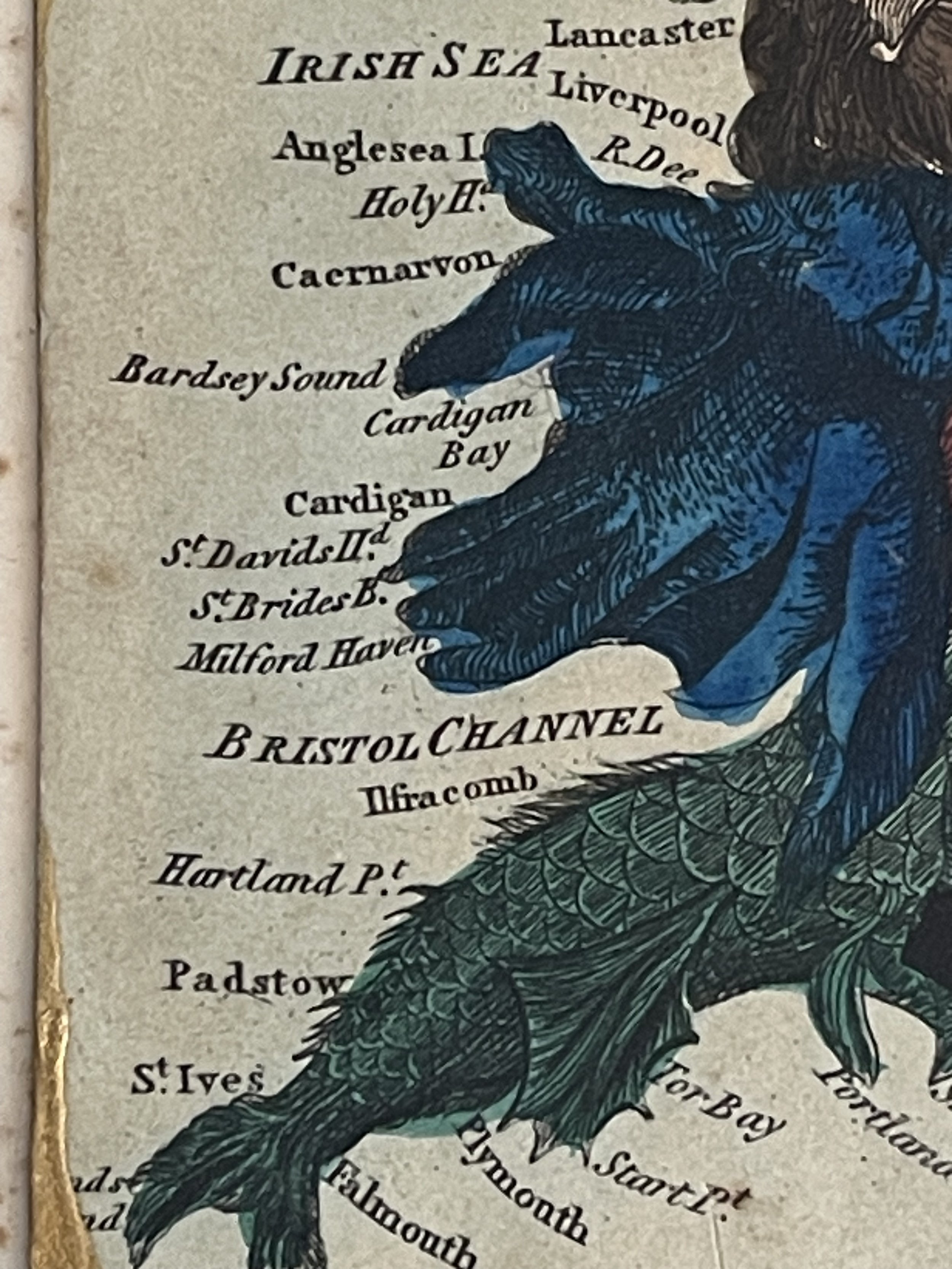 Image 5 of 7
Image 5 of 7

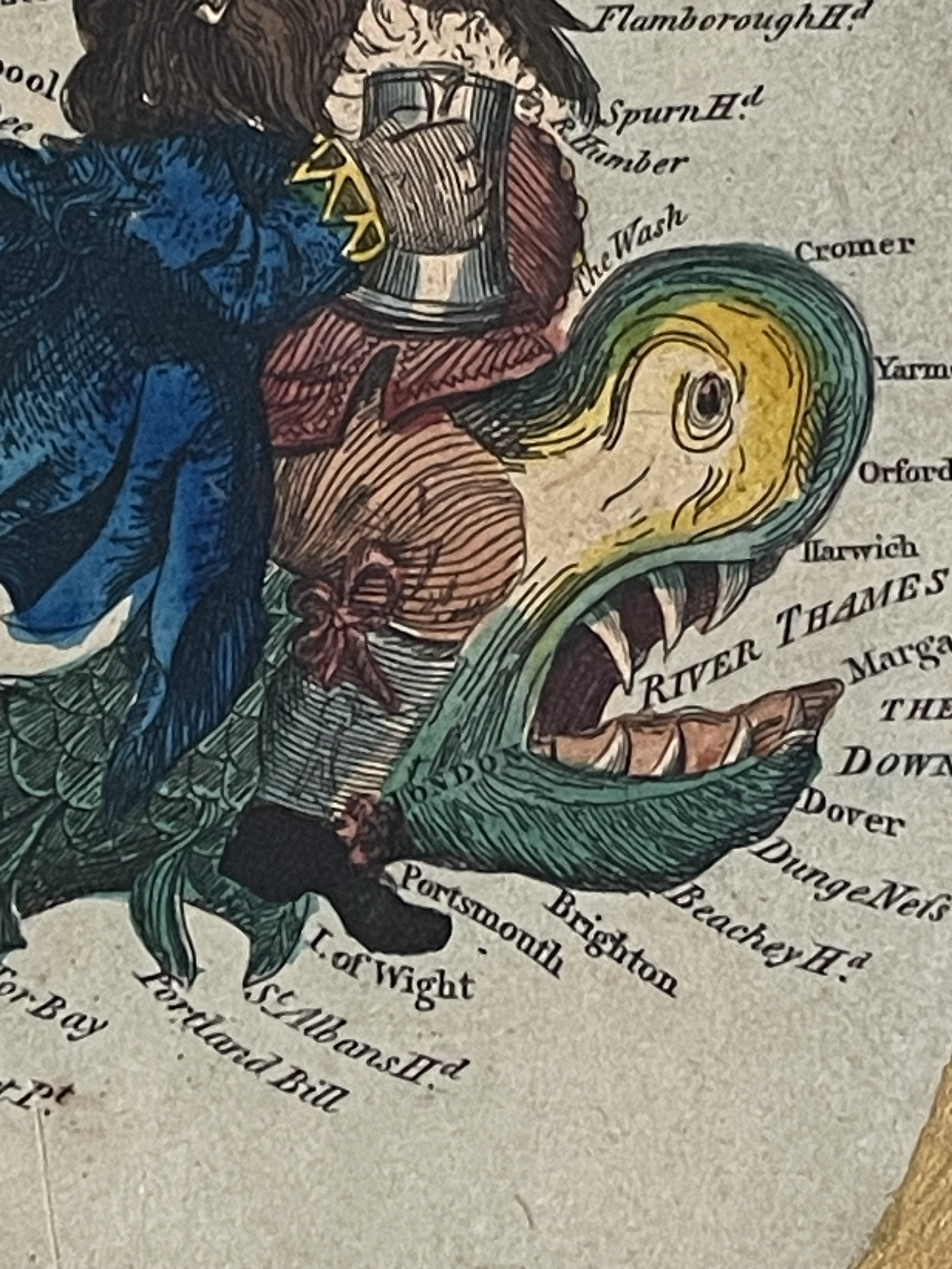 Image 6 of 7
Image 6 of 7

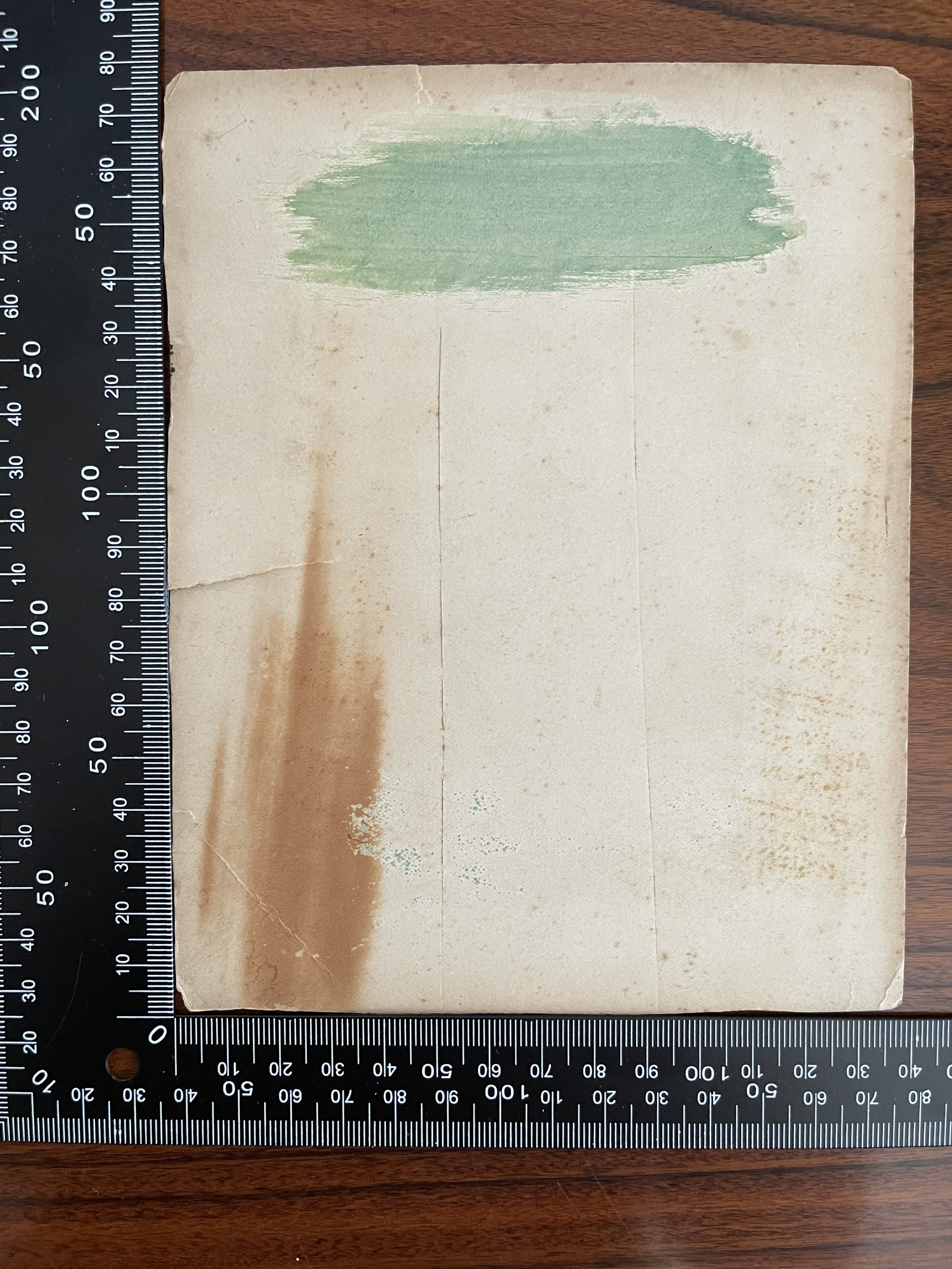 Image 7 of 7
Image 7 of 7








Satirical Droll Caricature Mao of England & Wales Geography Bewitched! - Robert Dighton - Colour Wash Engraving - 1795 - Very Scarce
A small Satirical Caricature Map of England and Wales dating from around 1815, depicted as an old man riding a-top a fish, it's gaping mouth the River Thames estuary. The old man clutches his tankard of ale and clamps his teeth over a clay pipe. The picture has full colour wash to the image. Printed on thin board, the image has gilded corners to fit into a small frame (the backing board was presumably added to hold it in place). By or after Robert Dighton, who was well known for his social caricatures and also due to his theft of artwork from the British Museum! Following his death in 1814, his sons continued selling his works.
The print is in good condition, but with some defects; two slits to the title at the bottom of the print; minor foxing visible in the 'sea', the backing card has tears around the edges and more foxing spots.
actual print size, approx: 5" x 3½" (127mm x 92mm)
backing card, approx: 7" x 5½" (180mm x 140mm).
Robert Dighton (c.1752 – 1814) was an English portrait painter, printmaker, and caricaturist. He was the founder of a dynasty of artists who followed in his footsteps.
Robert Dighton was the son of London printseller John Dighton. In the 1770s he began acting and singing in plays at the Haymarket Theatre, Covent Garden, and Sadler’s Wells while at the same time training and exhibiting at the Royal Academy, whose school he entered in 1772. He also exhibited at the Free Society of Artists between 1769–73. The first prints he designed were of actors for John Bell's edition of Shakespeare (1775–76).
As an artist, he was first offered consistent employment by the publisher Carington Bowles (fl. 1752–93). This was the heyday of the so-called 'droll' mezzotint, and Dighton's designs, executed in watercolour and then engraved, were an integral part of Bowles’s stock. Carington Bowles was also among London's most active mapsellers of his day, which goes some way to explaining the inclusion of some caricature maps by Dighton in Bowles’s Geography Bewitched! series, including those of Ireland, England, Wales, and Scotland.
Much of Dighton's early work was issued anonymously, but by the early 1790s it became increasingly well known, so he began etching and publishing under his own name. In awkward poses with ruddy faces, Dighton's satirical caricatures included lawyers, military officers, actors and actresses, and even down-at-heel types. In 1795 he brought out a Book of Heads and thenceforth devoted himself chiefly to caricature. His work is less biting than that of his contemporaries James Gilray and George Cruikshank.
By the start of the century, his success allowed him to open a shop in Charing Cross, where he sold his own prints and those of others until it emerged in 1806 that part of his stock was stolen from the British Museum. An art dealer by the name of Samuel Woodburn had purchased a print, an impression of Rembrandt's Coach Landscape, from Dighton and, supposing it might be a copy, took the print to the British Museum to compare it with the impression there. When it was discovered that their impression was missing, Dighton confessed that he had befriended a museum official by drawing portraits of him and his daughter during his visits and used this relationship to remove prints from the museum hidden in his portfolio.
Because of his co-operation, Dighton escaped prosecution, but he was forced to lie low in Oxford until the scandal died down. While there, as well as in Bath and Cambridge, he did an amusing series of portraits of academic types and country gentlemen. Returning to London in 1810, he reopened his studio, where he worked with his sons until his death in 1814.
Geography Bewitched! One of three engraved caricature maps, with fine original hand-colour. A fine set of Robert Dighton's "Geography Bewitched" series, depicting England, Wales, Scotland, and Ireland in a humorous light. England and Wales are depicted as John Bull with full tankard of beer in hand and riding a monstrous fish; Scotland is a merry gent, who sits on a wool sack and carrying a tartan sack over his shoulder; and Ireland as a merry woman - who is said to the wife of John Bull - in traditional dress playing the harp. The series was the work of Robert Dighton (c1752-1814) a well-known painter of portraits and caricatures, as well as decorative subjects, who is regarded as one of the most talented social caricaturists of the late eighteenth and early nineteenth centuries. Dighton's satirical art was extremely successful, eventually allowing him to open his own gallery. However, in 1806 scandal erupted when it was discovered that Dighton had been stealing prints from the British Museum and selling them in his gallery. This fraud was only discovered when one of Dighton's customers, concerned that the print he had purchased was a fake, took the piece into the British Museum to compare it with their copy, only to find that the Museum's copy had been stolen. By cooperating with authorities in the recovery of the stolen material Dighton was able to evade prosecution The series like much of Dighton's caricatures were published by Carington Bowles (fl.1752-1793). Carington Bowles worked initially with his father, John Bowles, before leaving to take over his uncle Thomas Bowles (II)'s business, circa 1762. Carington Bowles was one of the most active mapsellers and publishers of his day in London. His business was continued by his some Henry Carington Bowles who, in partnership with Samuel Carver, continued to publish maps and prints well into the nineteenth century. BM Satires 8397, 8398, 8399.
A small Satirical Caricature Map of England and Wales dating from around 1815, depicted as an old man riding a-top a fish, it's gaping mouth the River Thames estuary. The old man clutches his tankard of ale and clamps his teeth over a clay pipe. The picture has full colour wash to the image. Printed on thin board, the image has gilded corners to fit into a small frame (the backing board was presumably added to hold it in place). By or after Robert Dighton, who was well known for his social caricatures and also due to his theft of artwork from the British Museum! Following his death in 1814, his sons continued selling his works.
The print is in good condition, but with some defects; two slits to the title at the bottom of the print; minor foxing visible in the 'sea', the backing card has tears around the edges and more foxing spots.
actual print size, approx: 5" x 3½" (127mm x 92mm)
backing card, approx: 7" x 5½" (180mm x 140mm).
Robert Dighton (c.1752 – 1814) was an English portrait painter, printmaker, and caricaturist. He was the founder of a dynasty of artists who followed in his footsteps.
Robert Dighton was the son of London printseller John Dighton. In the 1770s he began acting and singing in plays at the Haymarket Theatre, Covent Garden, and Sadler’s Wells while at the same time training and exhibiting at the Royal Academy, whose school he entered in 1772. He also exhibited at the Free Society of Artists between 1769–73. The first prints he designed were of actors for John Bell's edition of Shakespeare (1775–76).
As an artist, he was first offered consistent employment by the publisher Carington Bowles (fl. 1752–93). This was the heyday of the so-called 'droll' mezzotint, and Dighton's designs, executed in watercolour and then engraved, were an integral part of Bowles’s stock. Carington Bowles was also among London's most active mapsellers of his day, which goes some way to explaining the inclusion of some caricature maps by Dighton in Bowles’s Geography Bewitched! series, including those of Ireland, England, Wales, and Scotland.
Much of Dighton's early work was issued anonymously, but by the early 1790s it became increasingly well known, so he began etching and publishing under his own name. In awkward poses with ruddy faces, Dighton's satirical caricatures included lawyers, military officers, actors and actresses, and even down-at-heel types. In 1795 he brought out a Book of Heads and thenceforth devoted himself chiefly to caricature. His work is less biting than that of his contemporaries James Gilray and George Cruikshank.
By the start of the century, his success allowed him to open a shop in Charing Cross, where he sold his own prints and those of others until it emerged in 1806 that part of his stock was stolen from the British Museum. An art dealer by the name of Samuel Woodburn had purchased a print, an impression of Rembrandt's Coach Landscape, from Dighton and, supposing it might be a copy, took the print to the British Museum to compare it with the impression there. When it was discovered that their impression was missing, Dighton confessed that he had befriended a museum official by drawing portraits of him and his daughter during his visits and used this relationship to remove prints from the museum hidden in his portfolio.
Because of his co-operation, Dighton escaped prosecution, but he was forced to lie low in Oxford until the scandal died down. While there, as well as in Bath and Cambridge, he did an amusing series of portraits of academic types and country gentlemen. Returning to London in 1810, he reopened his studio, where he worked with his sons until his death in 1814.
Geography Bewitched! One of three engraved caricature maps, with fine original hand-colour. A fine set of Robert Dighton's "Geography Bewitched" series, depicting England, Wales, Scotland, and Ireland in a humorous light. England and Wales are depicted as John Bull with full tankard of beer in hand and riding a monstrous fish; Scotland is a merry gent, who sits on a wool sack and carrying a tartan sack over his shoulder; and Ireland as a merry woman - who is said to the wife of John Bull - in traditional dress playing the harp. The series was the work of Robert Dighton (c1752-1814) a well-known painter of portraits and caricatures, as well as decorative subjects, who is regarded as one of the most talented social caricaturists of the late eighteenth and early nineteenth centuries. Dighton's satirical art was extremely successful, eventually allowing him to open his own gallery. However, in 1806 scandal erupted when it was discovered that Dighton had been stealing prints from the British Museum and selling them in his gallery. This fraud was only discovered when one of Dighton's customers, concerned that the print he had purchased was a fake, took the piece into the British Museum to compare it with their copy, only to find that the Museum's copy had been stolen. By cooperating with authorities in the recovery of the stolen material Dighton was able to evade prosecution The series like much of Dighton's caricatures were published by Carington Bowles (fl.1752-1793). Carington Bowles worked initially with his father, John Bowles, before leaving to take over his uncle Thomas Bowles (II)'s business, circa 1762. Carington Bowles was one of the most active mapsellers and publishers of his day in London. His business was continued by his some Henry Carington Bowles who, in partnership with Samuel Carver, continued to publish maps and prints well into the nineteenth century. BM Satires 8397, 8398, 8399.
Code : A987
Cartographer : Cartographer / Engraver / Publisher: Robert Dighton
Date : Publication Place / Date - circa 1795
Size : Sheet size: Image Size: 12.7 x 9.2 cm
Availability : Available
Type - Genuine - Antique
Grading A-
Where Applicable - Folds as issued. Light box photo shows the folio leaf centre margin hinge ‘glue’, this is not visible otherwise.
Tracked postage, in casement. Please contact me for postal quotation outside of the UK.